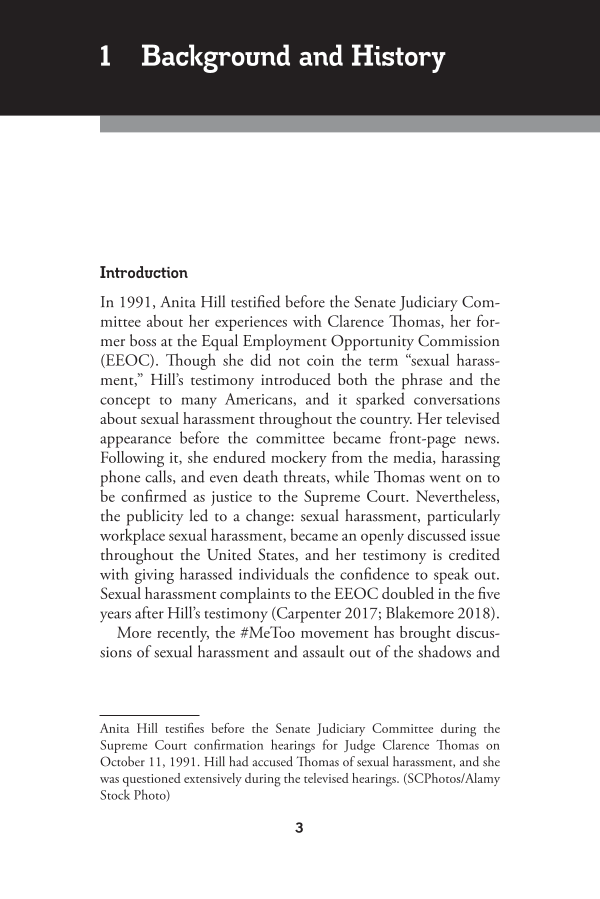3 1 Background and History Introduction In 1991, Anita Hill testified before the Senate Judiciary Com- mittee about her experiences with Clarence Thomas, her for- mer boss at the Equal Employment Opportunity Commission (EEOC). Though she did not coin the term “sexual harass- ment,” Hill’s testimony introduced both the phrase and the concept to many Americans, and it sparked conversations about sexual harassment throughout the country. Her televised appearance before the committee became front-page news. Following it, she endured mockery from the media, harassing phone calls, and even death threats, while Thomas went on to be confirmed as justice to the Supreme Court. Nevertheless, the publicity led to a change: sexual harassment, particularly workplace sexual harassment, became an openly discussed issue throughout the United States, and her testimony is credited with giving harassed individuals the confidence to speak out. Sexual harassment complaints to the EEOC doubled in the five years after Hill’s testimony (Carpenter 2017 Blakemore 2018). More recently, the #MeToo movement has brought discus- sions of sexual harassment and assault out of the shadows and Anita Hill testifies before the Senate Judiciary Committee during the Supreme Court confirmation hearings for Judge Clarence Thomas on October 11, 1991. Hill had accused Thomas of sexual harassment, and she was questioned extensively during the televised hearings. (SCPhotos/Alamy Stock Photo)
Document Details My Account Print multiple pages
Print
You have printed 0 times in the last 24 hours.
Your print count will reset on at .
You may print 0 more time(s) before then.
You may print a maximum of 0 pages at a time.




























































































































































































































































































































































































